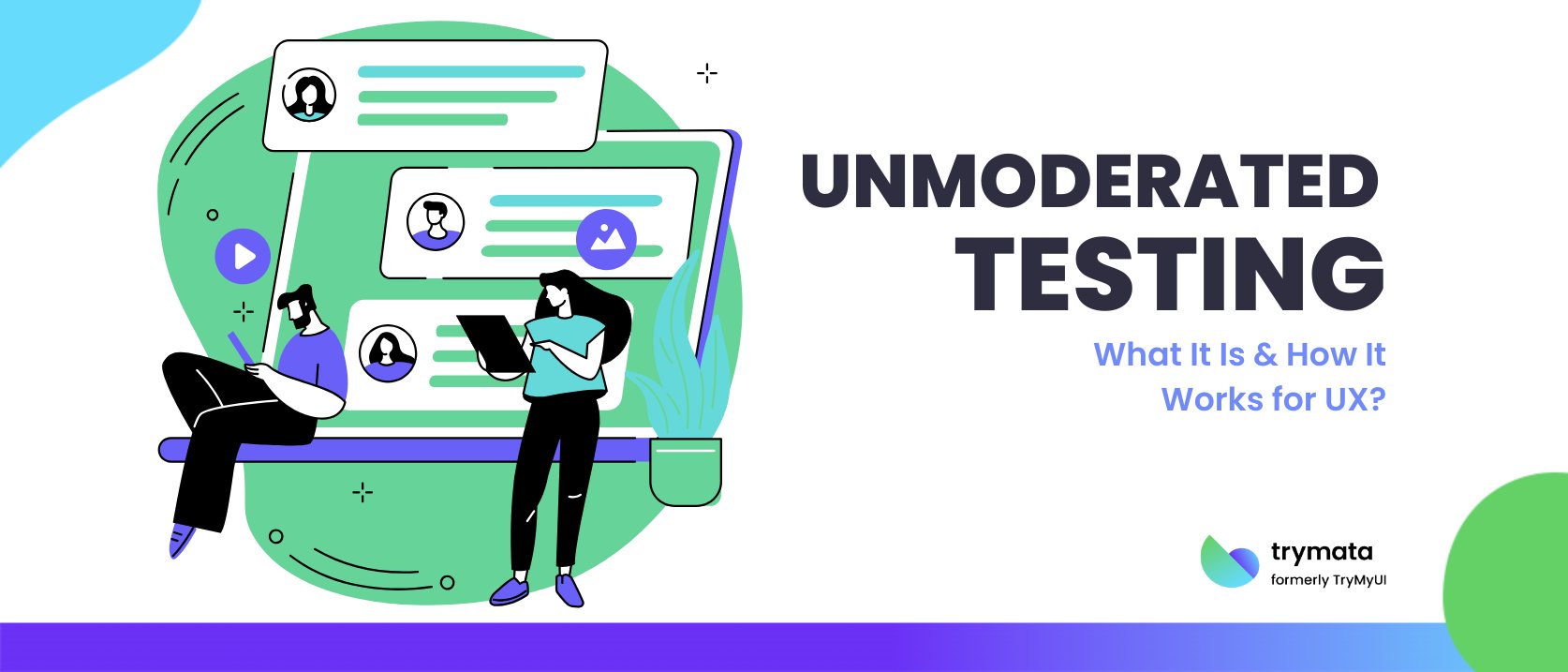Unmoderated usability testing is a remote research method where users complete tasks with your product or website independently, without a facilitator present. Compared to moderated usability testing, where a researcher actively guides the participant and asks follow-up questions, this approach enables people to engage with your product at their own pace and in their environment.
Whether you’re running remote usability testing, validating a prototype, or testing a live website, unmoderated user testing helps you uncover natural user behavior, gather qualitative data, and scale your usability testing efforts cost-effectively.
In this blog, you’ll learn what unmoderated testing is, how it works, the tools that support it, and when to use it, especially in remote settings where speed, scale, and actionable feedback matter most.
What is Unmoderated Testing?
Unmoderated testing is a user research method in which participants independently interact with a product or website without direct guidance or supervision from a moderator.
In unmoderated testing, participants are typically given a set of tasks to complete, and their interactions are recorded using specialized tools or software. These tools capture on-screen activities, clicks, and even facial expressions or voice commentary, offering a comprehensive view of the user experience. This method is often employed for remote usability testing, enabling a more extensive reach as participants can take part from various locations and time zones.
To address this, researchers often supplement unmoderated tests with additional survey questions or post-test interviews to gain a deeper understanding of user behaviors and preferences.
Related: What is User Experience (UX) Optimization?
When to Use Unmoderated Usability Testing
This method shines in many use cases:
- Remote research when face-to-face isn’t feasible
- Early prototype testing before full builds
- Testing across live websites for user friction
- Exploring new tool features for discoverability
- Gaining fast insights for product teams in agile cycles
If your study objectives focus on behavioral patterns, task success rates, or identifying UX bottlenecks, unmoderated testing is a great fit.
How to Run an Unmoderated Testing
The unmoderated uability testing process involves several key steps to ensure a structured and effective research methodology. Here’s an overview of the typical steps involved in unmoderated testing:

1. Define Your Objectives
Know exactly what you want to learn. Are you testing navigation? A checkout flow? Content clarity? Specific tasks?
2. Choose Your Target Users
Use recruitment filters to identify genuine target users based on their behaviors, demographics, or prior product usage.
3. Craft Clear, Actionable Tasks
Tasks should reflect real-world scenarios. Avoid ambiguity—limited functionality or vague prompts can confuse users and affect data quality.
4. Pick the Right Tool
Select from top unmoderated testing tools like:
- UserTesting (rich video feedback)
- Lookback (live and async options)
- Maze (great for designers)
Choose the right tool based on your needs: visual feedback, voice notes, or just screen flows.
5. Pilot Test Your Study
Run a pilot test with a few internal users or a small sample to ensure instructions make sense and technical issues don’t interfere.
6. Launch the Study
Once everything is ready, publish your test and start collecting sessions. Monitor the progress to ensure participants are completing it properly.
7. Analyze Results
Look for patterns: Where do users drop off? Which tool features are hard to find? What tasks do they complete quickly? Pair metrics with open-ended responses for a balanced view.
Summarize your findings and deliver actionable feedback to designers, developers, or stakeholders. The goal is to improve the product with more confidence, based on user evidence.
By following these key steps, researchers can conduct practical unmoderated testing sessions, gather valuable user insights, and contribute to the optimization of the user experience.
Learn more: What is a User Interview?
Unmoderated Testing vs. Moderated Testing
Both unmoderated and moderated testing methods are valuable and are often best used in combination. Here’s a breakdown:
| Factor | Unmoderated Testing | Moderated Testing |
|---|---|---|
| Facilitation | No facilitator present | A live facilitator guides the session |
| User Environment | Own device, own setting | Often in-person or scheduled virtual |
| Speed | Fast to launch, scale quickly | Slower, more setup time |
| Insight Depth | Behavioral, task-based | Rich qualitative studies with probing |
| Use Case | Remote research, scale, and real-world use | Complex flows, early-stage ideas |
Often, teams begin with unmoderated usability testing to identify major usability issues, then follow up with moderated testing to delve deeper into specific problems.
Benefits of Unmoderated Testing
Unmoderated testing offers several benefits that make it a valuable method in the user research toolbox. This method has gained traction because it’s:
- Scalable: You can collect feedback from dozens—or hundreds—of users without needing to host individual sessions.
- Fast: Participants complete tasks on their own schedule. No need to juggle calendars or wait for availability.
- Realistic: Since people use the product in their own environment, you see what they’d do, not what they think they should do with someone watching.
- Cost-effective: It’s cheaper than running moderated tests, especially at scale.
- Unbiased: Without a moderator present, there’s less influence on the user’s behavior or responses.
And with modern tools, you don’t just get video recordings. You can also track clicks, scrolls, task completion times, even voice commentary or facial expressions (if enabled).
Learn more: User Experience (UX) Design Trends in 2024
Potential Challenges of Unmoderated Testing
While unmoderated testing offers numerous advantages, it also presents its own set of challenges that researchers and organizations must consider. Like every method, it has its quirks:
- No live clarifications: If users get confused, there’s no one to help them out mid-test.
- Limited context: Without a facilitator, you might miss out on understanding why someone behaved a certain way.
- Technical issues: If something breaks or instructions are unclear, the user may just give up instead of troubleshooting.
- Environmental variability: People test from various devices, screen sizes, and settings, which can impact consistency.
That’s why many teams combine unmoderated usability testing with other methods, such as surveys or follow-up interviews, to fill in the gaps.
Conclusion
Unmoderated testing is one of the most potent forms of remote usability testing for
fast-paced teams. It’s especially effective when you need quick answers, broad reach, and real-world context, without the effort of scheduling individual sessions.
While it won’t replace the personal touch of in-person or moderated usability testing, it plays a critical role in scaling user tests, validating assumptions, and identifying major UX blockers.
When paired with thoughtful planning, the proper testing tools, and occasional moderated study follow-ups, unmoderated usability testing can unlock valuable qualitative insights that drive smarter design decisions.




